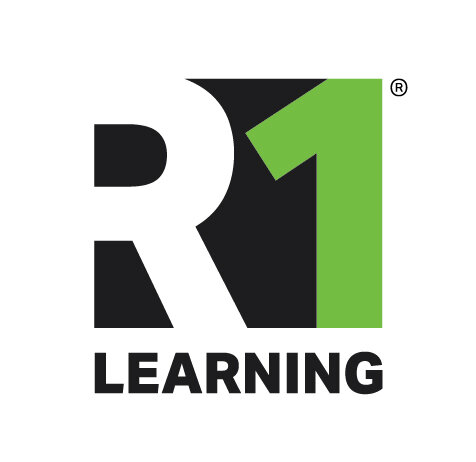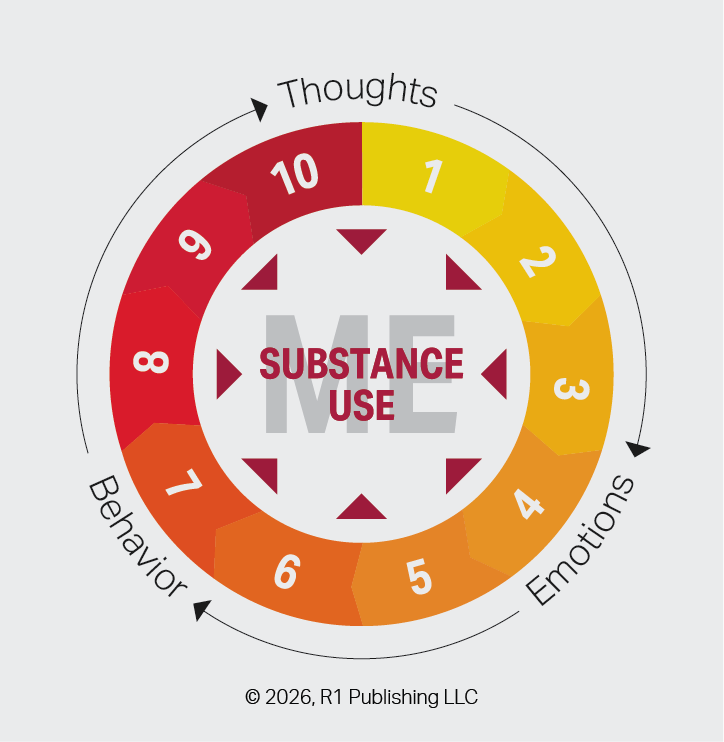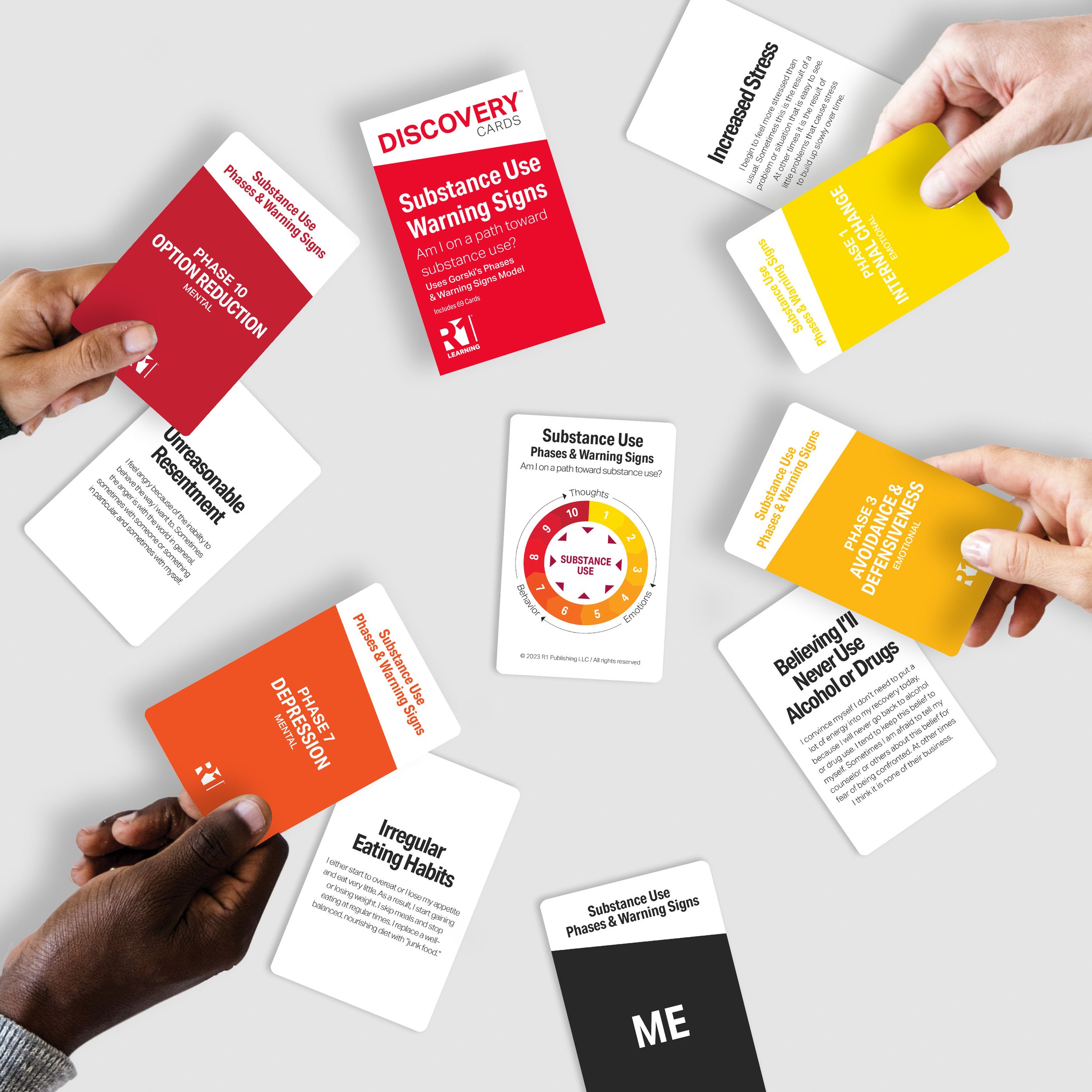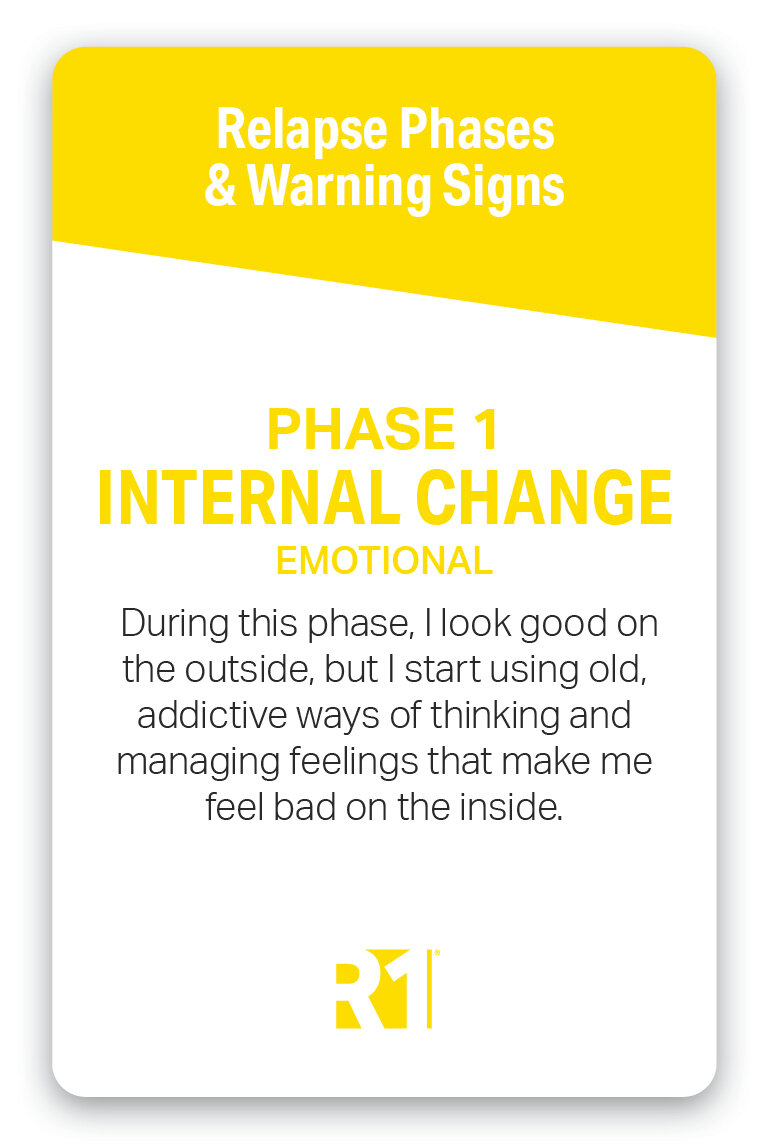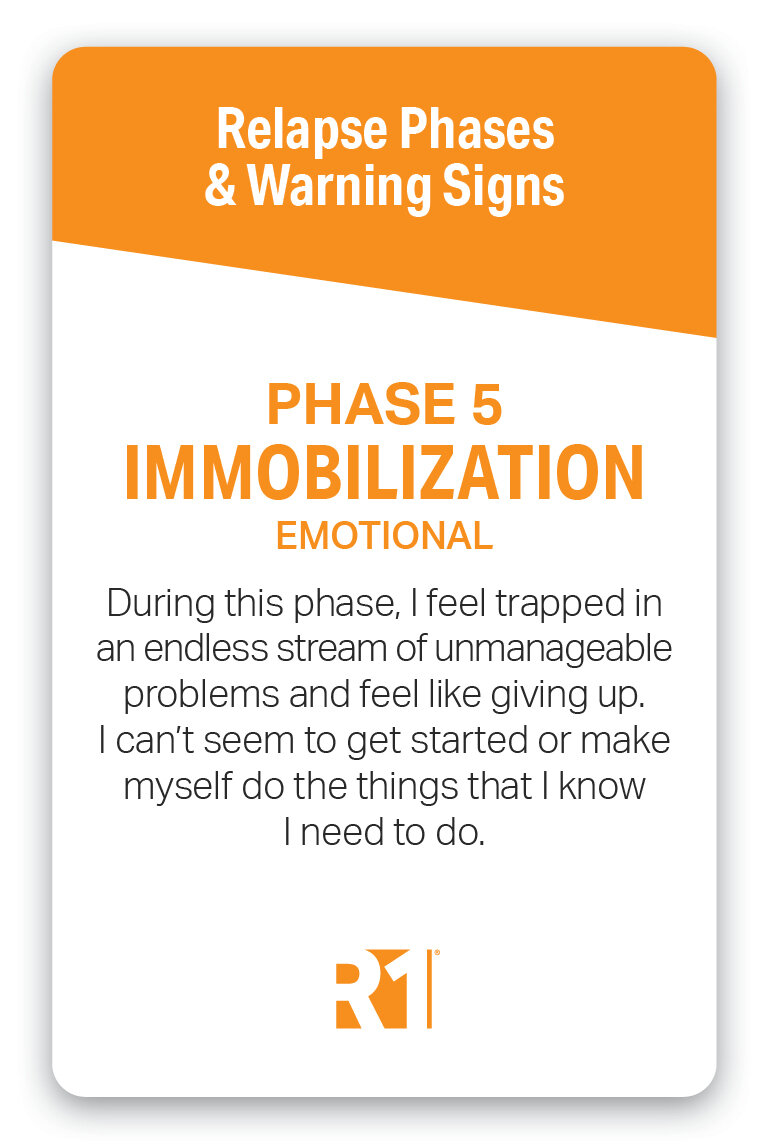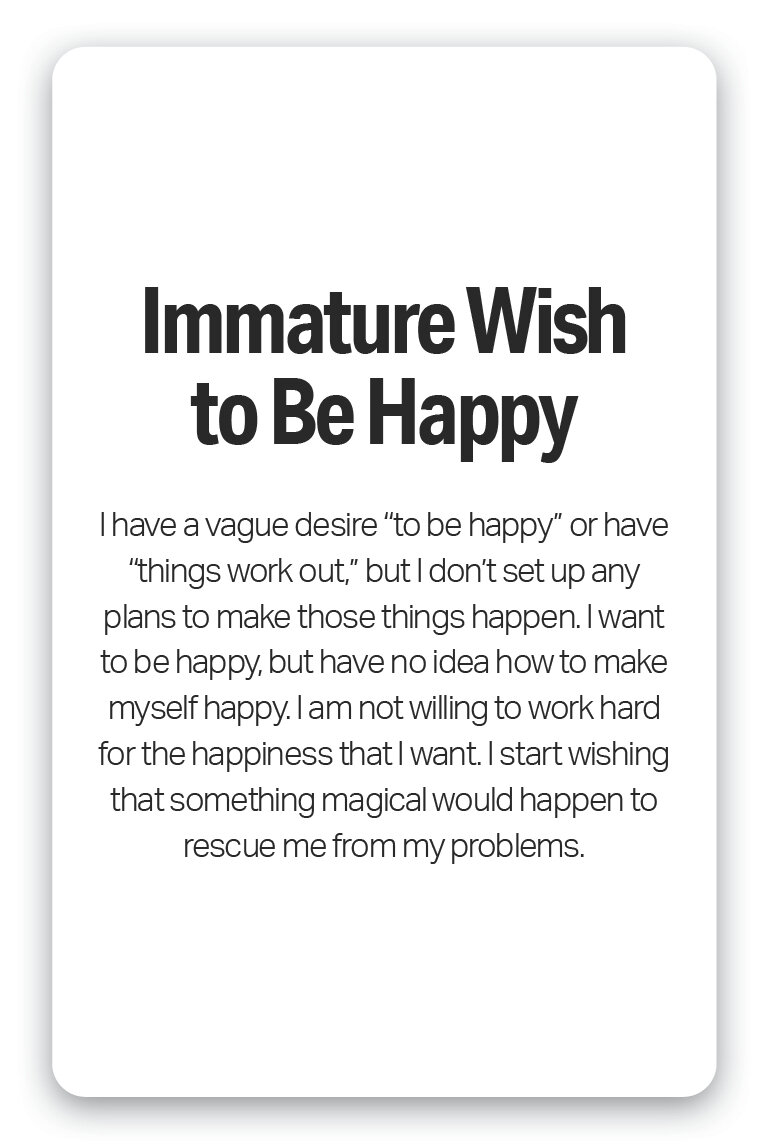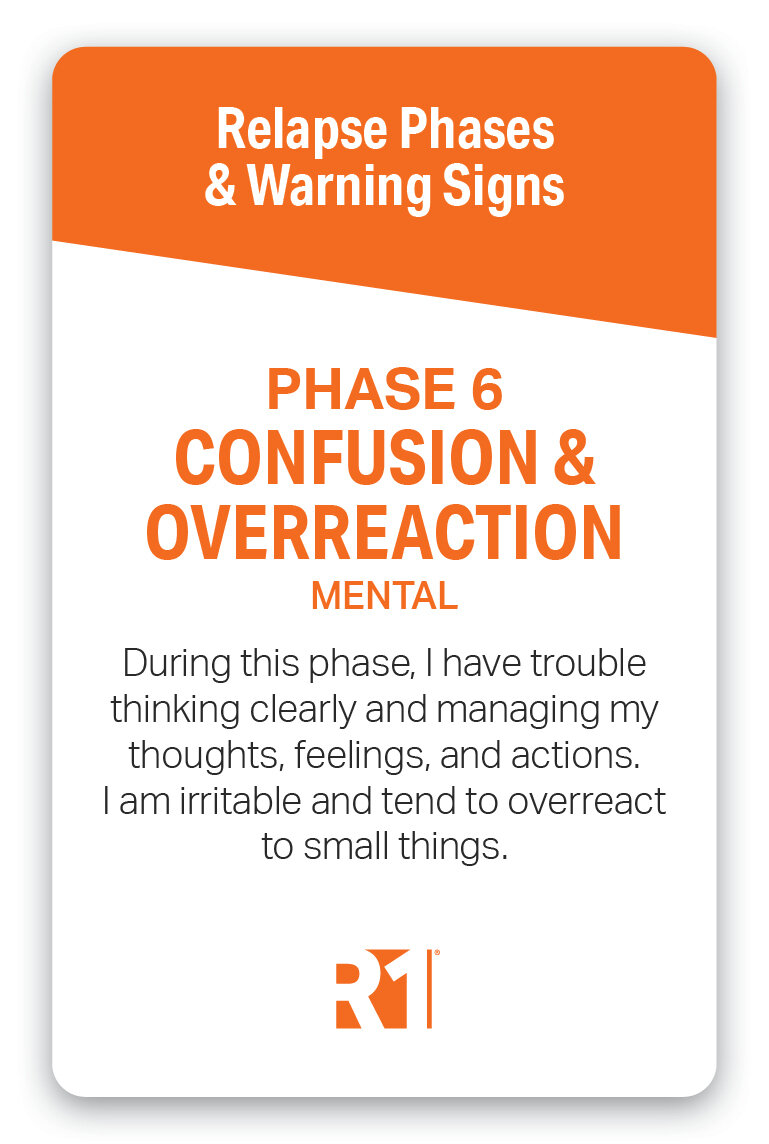10 Substance Use (Relapse) Warning Signs — Am I On A Path Toward Reuse?
Acknowledgements: Before I begin this post, I’d like to take a moment to honor Terrence Gorski who passed away at the end of last year for his life’s work and legacy to the field of substance use addiction and mental health. In my short industry tenure, I’ve met countless practitioners in the field who had either attended a conference where he spoke, were trained by Gorski directly, were trained by someone trained by Gorski, or deeply familiar with his countless books and workbooks. I would also like to thank Tresa Watson at CENAPS and the Gorski Bookstore for her partnership with R1 Learning from our inception. We are forever grateful and indebted to you both for enabling us to use and promote your work through the R1 Learning System.
Today’s Post: People often think that the return to substance use is an event. Research has shown that the process for returning to drinking or using, like all behavioral change processes, is patterned. Dr. DiClemente, one of the thought leaders of the Stages of Change model, refers to this as “recycling”, a normal part of the process on a change continuum. Relapse is not simply drinking or using drugs after a period of sobriety. The seeds for returning to drinking or using are planted well in advance of the behavior when normalized thinking and feelings start to become distorted. For example, during periods of extreme stress or anxiety, an individual in recovery can return to strong denial, isolation, poor decision-making, and poor coping strategies. The individual may not actually be using a substance, but the relapse process has begun. At this phase of the process, individuals may question whether they might be able to control their substance use, may minimize the seriousness of past consequences resulting from it, and may find themselves in high-risk situations, such as hanging out with substance-using friends. These are identifiable warning signs that can signal an early phase of the behavioral process.
Explore R1 Discover — Interactive Engagement Tools
Substance Use Warning Signs
How does this process work? Individuals experiencing warning signs can interrupt the process at this phase, for example, by reaching out for support from a family member, friend, peer-recovery support provider, counselor, or sponsor. If not interrupted, this phase can lead to slips, or brief episodes of substance use during an otherwise sober period. These are often “tests” where individuals see whether they can control their substance use. Slips can also be celebrations for successes, or responses to stress. While dangerous to many with high risk drug and alcohol use, a slip is not as serious as a full-blown return to daily use. Individuals can experience a single or a few slips, take responsibility, and even use this experience as part of their learning process. However, if an episode is not interrupted, it can easily lead to a full return to old behaviors and using patterns. This can be a brief or long period of a return to distorted thinking, feeling, and believing — and a return to a loss of control over substance use. A full relapse can be worsened by problems related to a person’s biological, psychological, or environmental factors. Addiction expert Terence Gorski analyzed these patterns and developed a simple model that incorporates these warning signs into specific phases and patterns of emotional, mental, and behavioral warning signs.
Substance Use Phases & Warning Signs Defined
The Discovery Cards include ten (10) Phase Definition Cards and forty-nine unique (49) Warning Signs to explore. See the definitions, partial lists of warning signs, and examples below. The Relapse Phases & Warning Signs Facilitator Guide provides background and situational activities to bring the Discovery Cards to life in both one-on-one and groups settings. Use the list below to think about yourself, or a person you are working with, and then answer the Questions to Explore below.
Phase 1—Internal Change: During this phase, I look good on the outside, but I start using old, addictive ways of thinking and managing feelings that make me feel bad on the inside. The most common relapse warning signs are:
Warning Signs:
(partial list, 3 of 4)
Increased Stress
(see example)Change in Thinking
Change in Feeling
Phase 2—Denial: During this phase, I stop paying attention to or honestly telling others what I am thinking and feeling. The most common relapse warning signs are::
Warning Signs:
Worrying about Myself
(see example)Denying that I'm Worried
Phase 3—Avoidance & Defensiveness: During this phase, I try to avoid anyone or anything that will force me to be honest about how my thinking, feelings, and behavior have changed. If I am confronted directly, I get defensive and can't hear what others are trying to tell me. The most common relapse warning signs are:
Warning Signs:
(partial list, 3 of 6)
Defensiveness
Impulsive Behavior
(see example)Tendencies Toward Loneliness
Phase 4—Crisis Building: During this phase, I start having problems in sobriety that I don't understand. Even though I want to solve these problems and work hard at it, two new problems pop up to replace every problem that I solve. The most common warning signs are:
Warning Signs:
(partial list, 3 of 4)
Minor Depression
Loss of Constructive Panning
(see example)Plans Begin to Fail
Phase 5—Immobilization: During this phase, I feel trapped in an endless stream of unmanageable problems and feel like giving up. I can't seem to get started or make myself do the things that I know I need to do. The most common relapse warning signs are:
Warning Signs:
Daydreaming and Wishful Thinking
Feelings that Nothing Can Be Solved
Immature Wish to Be Happy
(see example)
Phase 6—Confusion & Overreaction: During this phase I have trouble thinking clearly and managing my thoughts, feelings, and actions. I am irritable and tend to overreact to small things. The most common relapse warning signs are:
Warning Signs:
(partial list, 3 of 7)
Difficulty in Thinking Clearly
Difficulty in Managing Feelings and Emotions
Irritation with Friends
(see example)
Phase 7—Depression: During this phase, I become so depressed I can't do the things I normally do. At times I feel life is not worth living, and sometimes I think about killing myself or using alcohol or other drugs as a way to end the depression. I am so depressed that I can't hide it from others. The most common relapse warning signs are:
Warning Signs:
(partial list, 3 of 5)
Irregular Eating Habits
Lack of Desire to Take Action
Loss of Daily Structure
(see example)
Phase 8—Behavioral Loss of Control: During this phase, I can't control my thoughts, feelings, and behavior. I can't stick to a productive daily schedule. I am still denying how dysfunctional I have become, and I am not willing to admit I am out of control even though my life is chaotic, and I have serious problems. The most common warning signs are:
Warning Signs:
(partial list, 3 of 5)
Irregular Attendance at Recovery and Treatment Meetings
An "I Don't Care" Attitude
Dissatisfaction with Life
(see example)
Phase 9—Recognition of Loss of Control: During this phase, my denial breaks, and I suddenly recognize how severe my problems are, how unmanageable life has become, and how little power and control I have to solve any of my problems. This awareness is very painful and frightening. By this time I have become so isolated it seems there is no one to turn to for help. The most common warning signs are:
Warning Signs:
(partial list, 3 of 5)
Self-Pity
Thoughts of Social Use
Conscious Lying
(see example)
Phase 10—Option Reduction: During this phase, I feel trapped by pain and the inability to manage my life. I start to believe there are only three ways out - insanity, suicide, or self-medication with alcohol or drugs. I no longer believe anyone or anything can help me. The most common warning signs that occur during this phase are:
Warning Signs:
(partial list, 3 of 4)
Unreasonable Resentment
Discontinuing All Treatment and Recovery Meetings
Overwhelming Loneliness, Frustration, Anger, and Tension
(see example)
Phase 11—Acute Relapse Period: I convince myself that I have no choice but to use alcohol or drugs and using will somehow make my problems better or allow me to escape from them for a little while. I plan to try either social use or a short-term binge. If I try to be a controlled social or recreational user, I start using a little bit on a regular basis. If I decide to go out on a short-term binge, I plan a chemical-use episode that will be a "one-time only, time-limited, controlled binge."
Impact:
(partial list, 3 of 4)
Disappointment, Shame, and Guilt
Loss of Control
Life and Health Problems
How can this model help you? Each person has unique patterns and warning signs. Having individuals learn about and understand their own patterns of warning signs is important — this allows them to recognize that they are in the relapse process and interrupt their pattern. Awareness of relapse warning signs and developing a plan for how to take steps to interrupt the process from worsening is an important component of an individual’s recovery plan.
Questions to Explore
Answer these questions for yourself or someone you are working with.
Did you find this model helpful in thinking about and identifying substance use warning signs?
Did the phases help you to better pinpoint specific emotional, mental, and behavioral patterns? How were these categories helpful?
Which phases and warning signs were most prominent in your list? Insights?
As you look back over your drinking or using history, have these warning signs always surfaced on your path toward return to use? How?
Which warning signs were on top of your list? How do these specifically show up for you?
What actions can you take to avoid these warning signs in the future?
Who can you ask for help and support?
References
Gastfriend DR, Rubin A, Sharon E, Turner WM, Anton RF, Donovan DM, Gorski T, Marlatt GA, Maisto S, Schultz TK,
Shulman GD. “New Constructs and Assessments for Relapse and Continued Use Potential in the ASAM Patient Placement Criteria.” Journal of Addictive Diseases 22 (Supplement 1): 95–111, 2003.
Gorski TT. Starting Recovery with Relapse Prevention: A Workbook. Independence, MO, Herald Publishing House/ Independence Press, 2012.
Gorski TT. The Gorski-CENAPS Model for Recovery and Relapse Prevention. Independence, MO, Herald Publishing House/Independence Press, 2007.
Gorski TT, Miller M. Staying Sober: A Guide for Relapse Prevention. Independence, MO, Independence Press, 1988.
Evidence-Based Research:
A simple scale of Gorski's warning signs for relapse (Miller & Harris, 2000)
“Though it has enjoyed widespread popularity, Gorski's post-acute withdrawal syndrome (PAWS) model of relapse has been subjected to little scientific scrutiny. A scale to operationalize Gorski's 37 warning signs was developed and tested in a larger prospective study of predictors of relapse. CONCLUSIONS: This scale of Gorski's warning signs appears to be a reliable and valid predictor of alcohol relapses.”
A randomized trial of early warning signs relapse prevention training in the treatment of alcohol dependence (Bennett, et al, 2005)
“This current pragmatic study aims to establish whether providing Gorski’s intervention to alcohol dependent people when they complete day treatment reduces their risk of drinking during the following year. The results justify the use of EWSRPT with similar patients being treated in similar services, when the aim is to minimize drinking.”
Copyright 2023 R1 Publishing LLC / All Rights Reserved. Use of this article for any purpose is prohibited without permission.
Engage, Educate, and Equip Your Practitioners
Relapse Prevention Toolkits and Resources
The R1 Learning System and the Discovery Cards Group Kits enable programs to implement workforce training programs strategically. Contact us to learn more about how to best implement the R1 Relapse Phases & Warning Signs topic in your program, train your team, and engage clients in service. Visit the R1 Store to learn more about our training, tools, and technology resources. The Discovery Cards are an amazing tool for exploring these topics with individuals or groups.
Here are a few ideas to help you learn more about R1 and engage others on this topic:
Share this blog post with others. (Thank you!)
Start a conversation with your team. Bring this information to your next team meeting or share it with your supervisor. Change starts in conversations. Good luck! Let us know how it goes.
Visit R1LEARNING.com to learn more about R1, the Discovery Cards, and how we’re creating engaging learning experiences through self-discovery.
